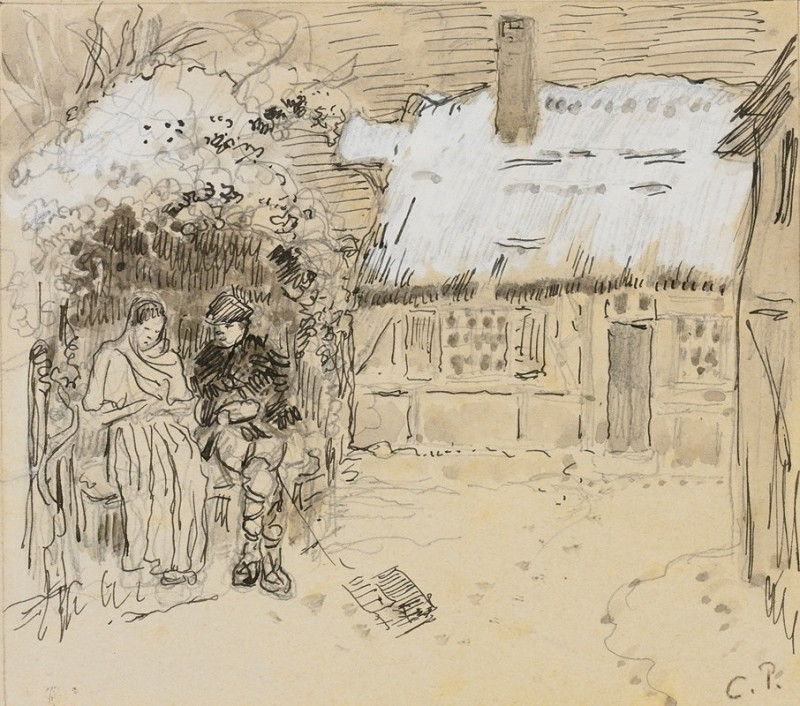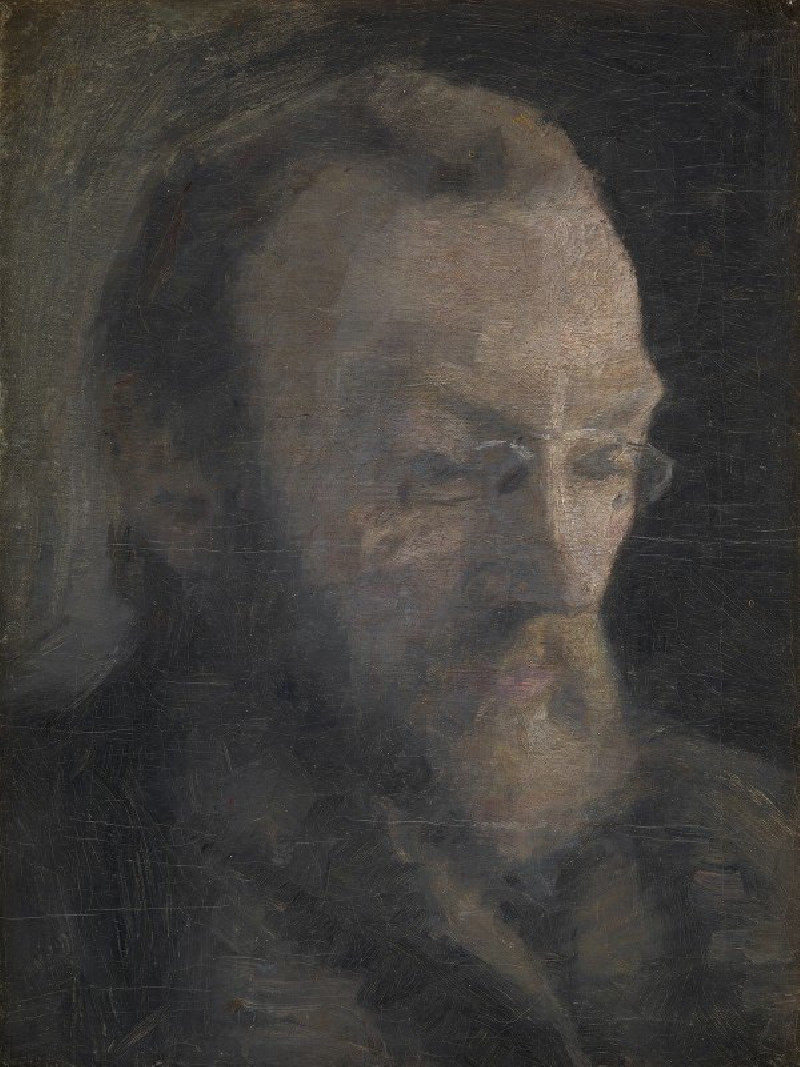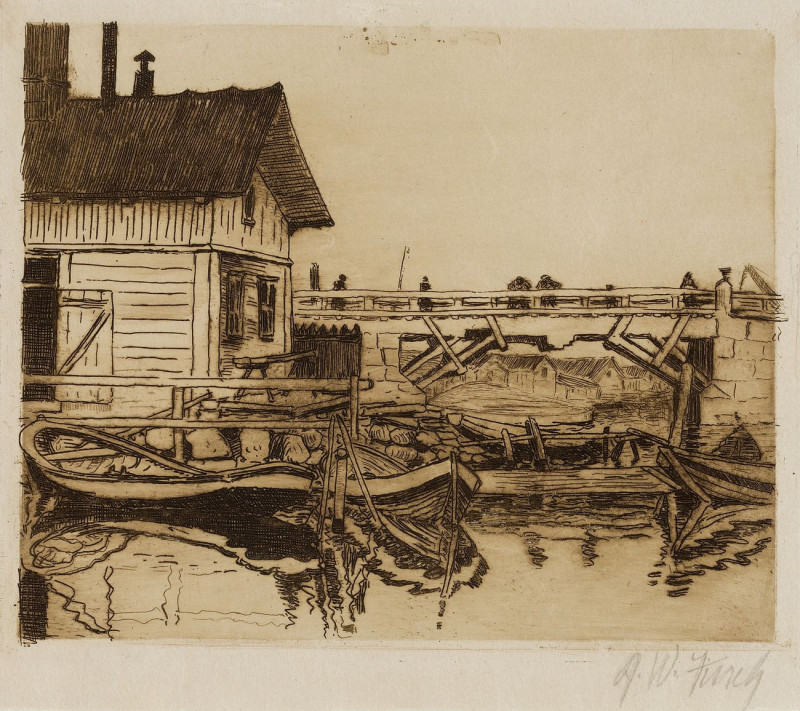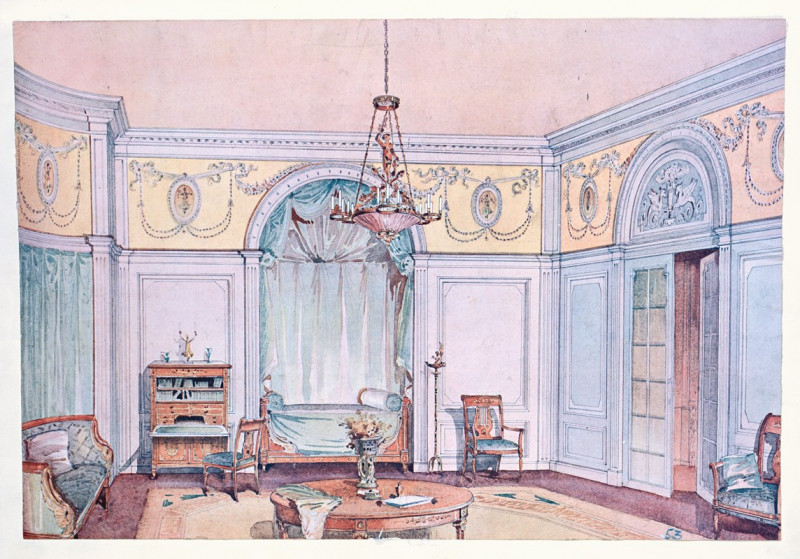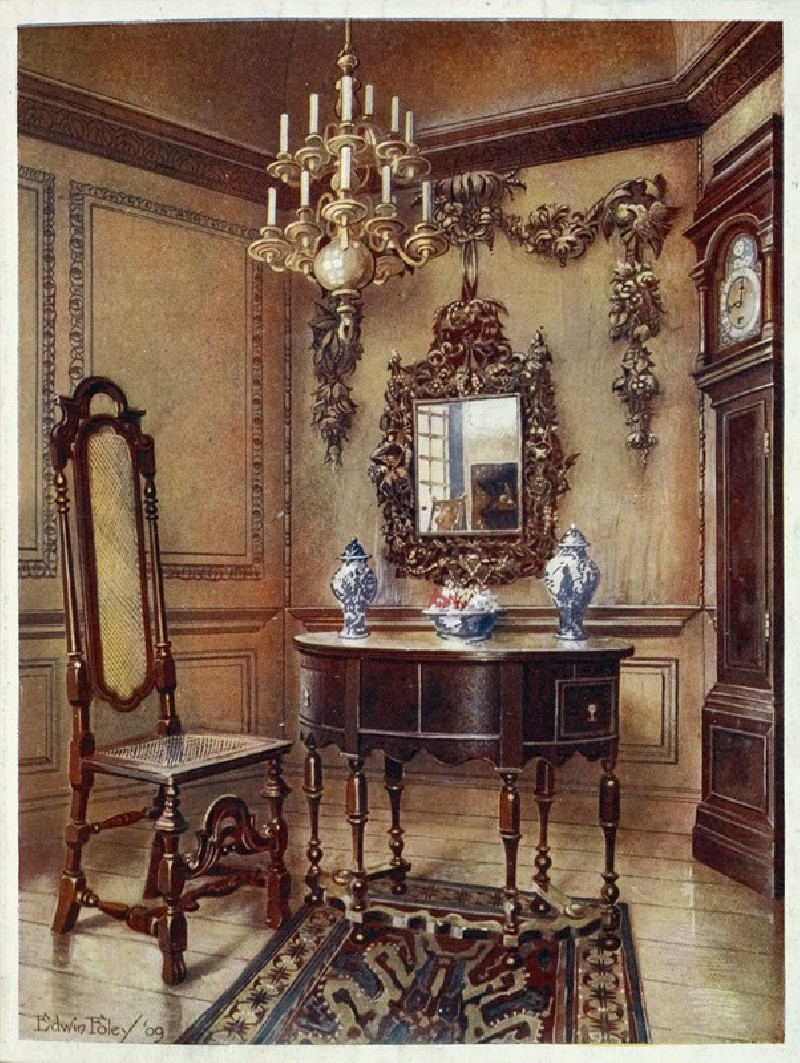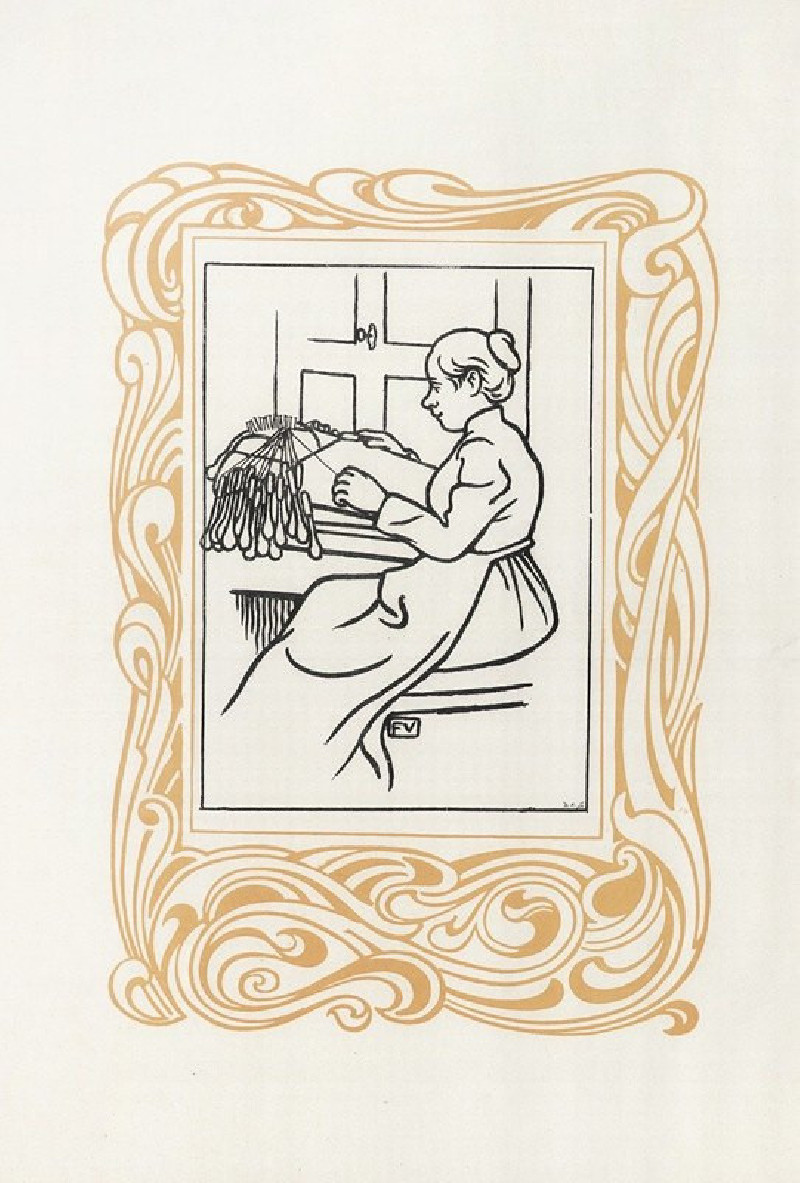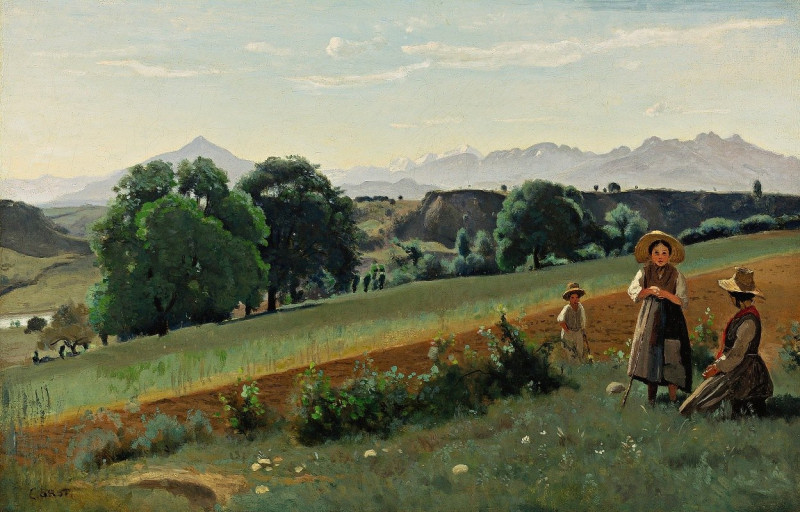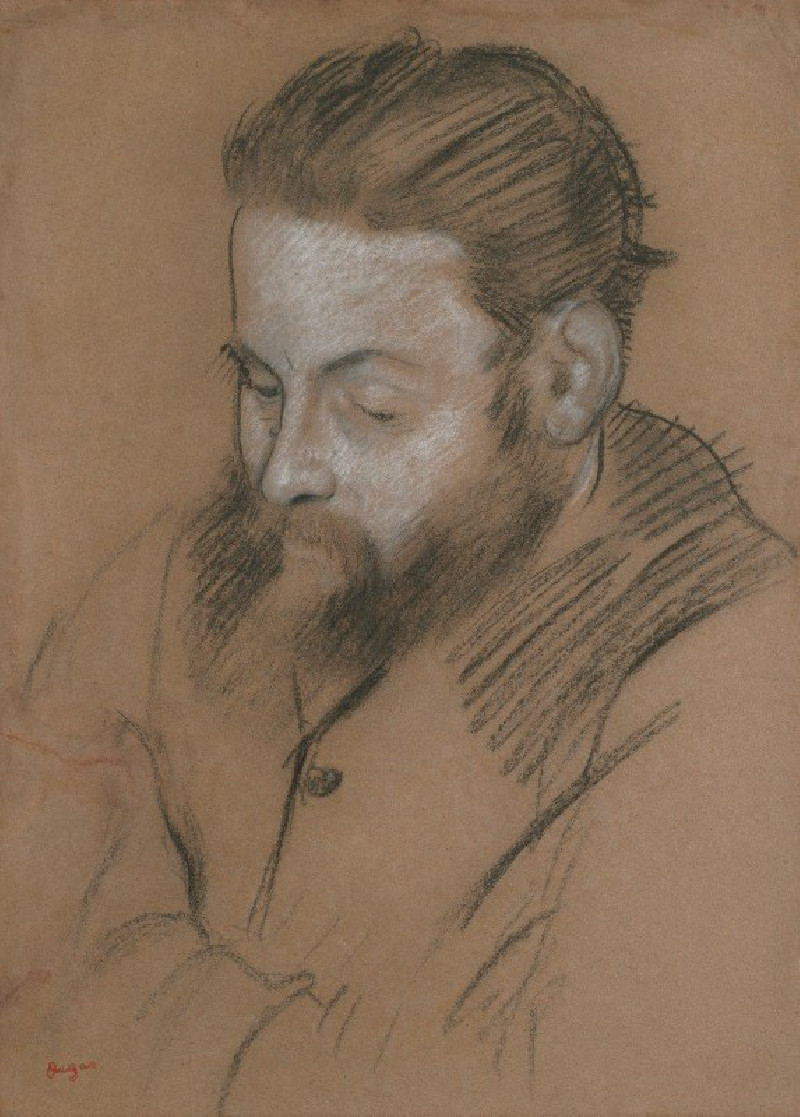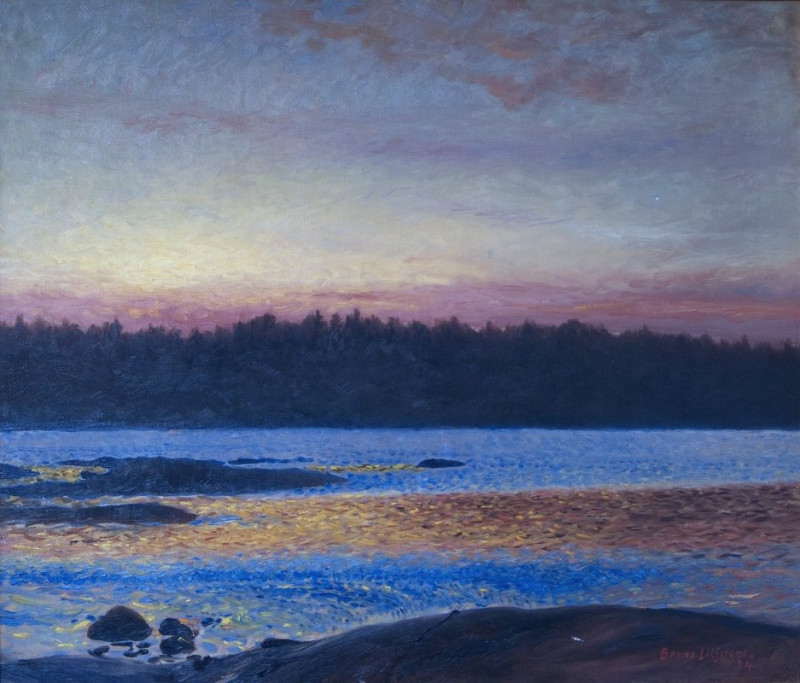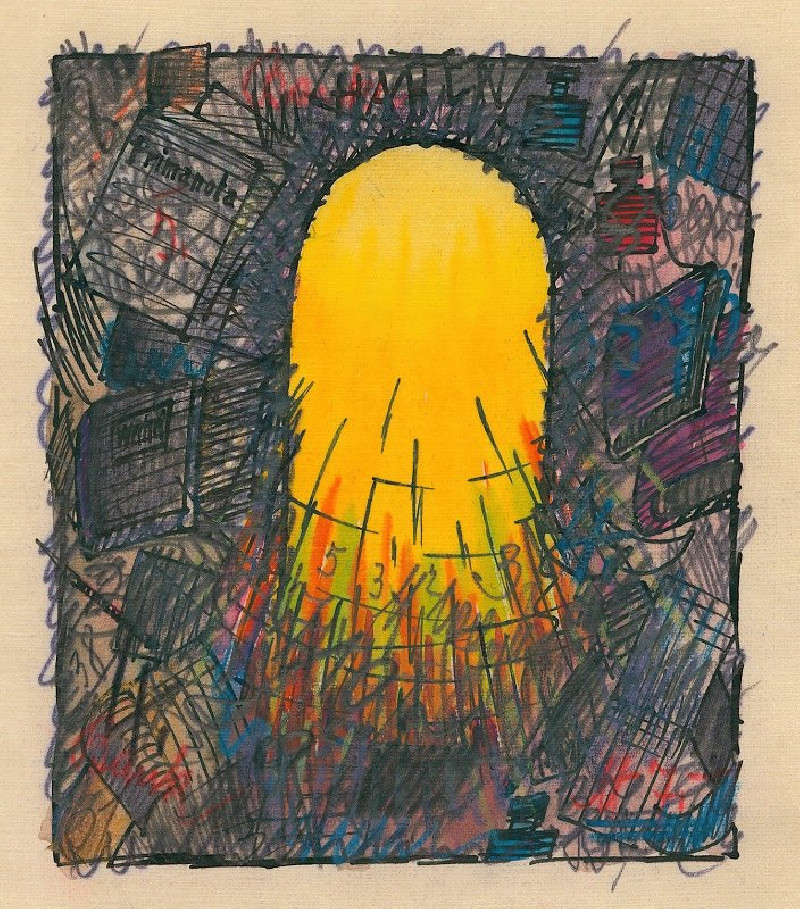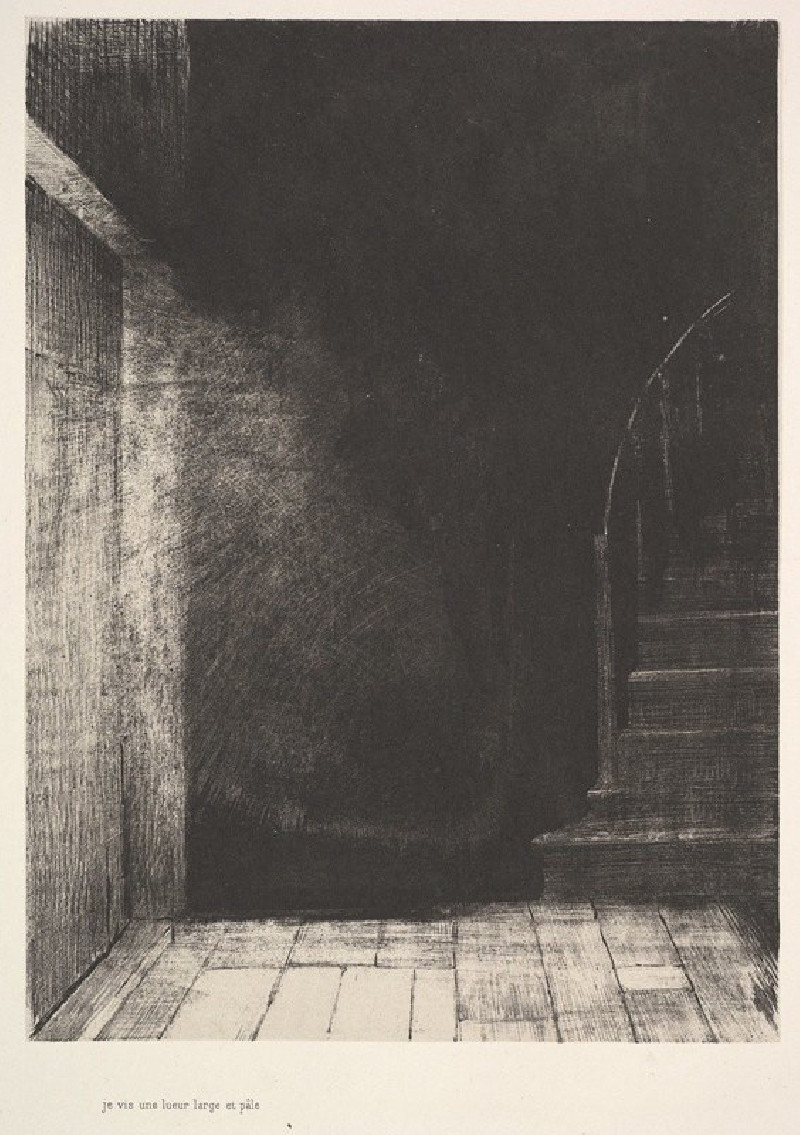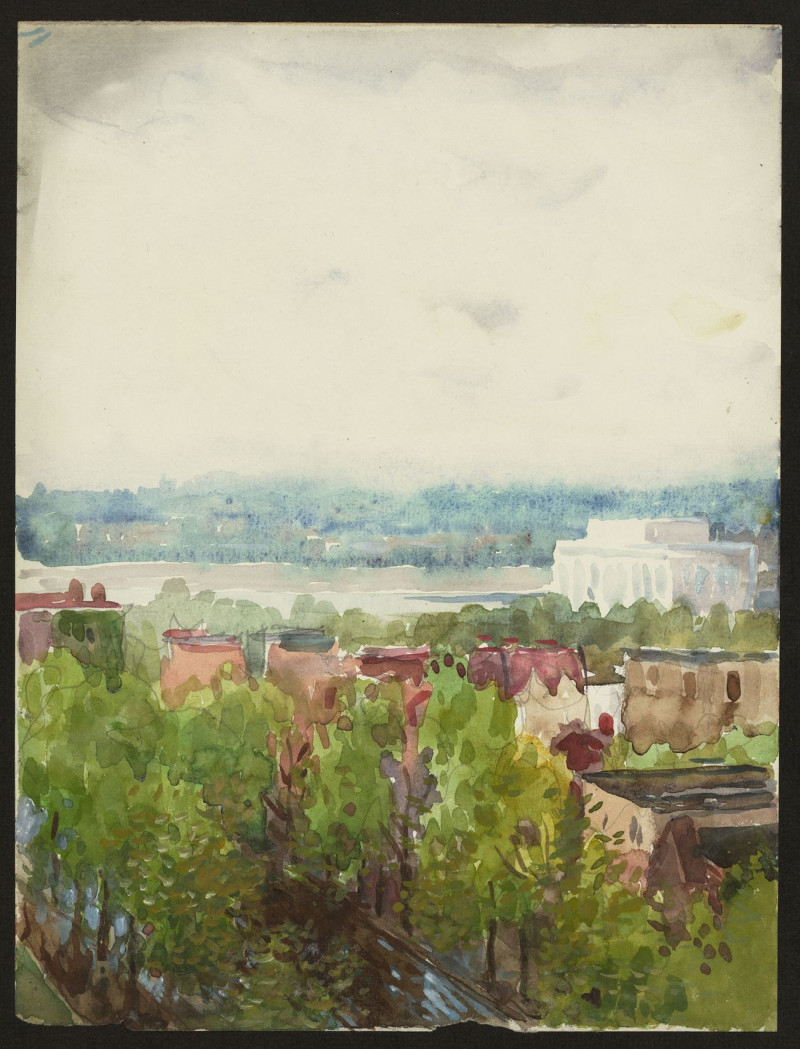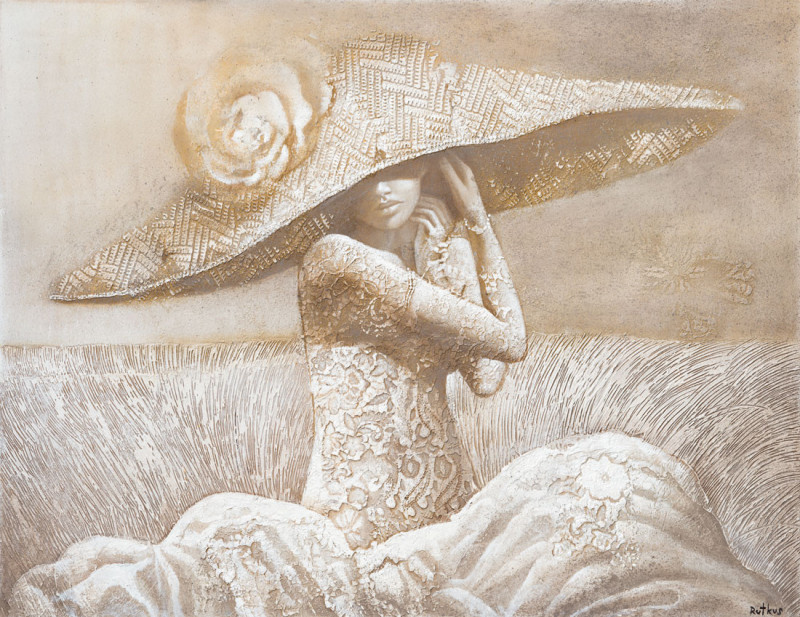Sous La Tonnelle (Study For Daphnis And Chloë) (circa 1895-1899)
Technique: Giclée quality print
Recommended by our customers
More about this artwork
"Sous La Tonnelle (Study for Daphnis and Chloë)" by Camille Pissarro is a captivating study that offers a glimpse into the artist's preparatory process for his larger works. Crafted circa 1895-1899, this drawing depicts a serene, intimate scene set in a rustic environment.In the foreground, two figures share a quiet moment under a leafy bower, which the French title translates to "Under the Arbor." The details and expressions of the figures are sketched with a gentle, yet deliberate hand, conveying a sense of quiet companionship and perhaps contemplation or tender dialogue. The female figure, delicately clad, is seated beside a male figure who appears in a more relaxed, almost slouched posture, suggesting ease and familiarity between the two.The background is dominated by a traditional thatched cottage, its texture and form rendered with rapid, confident strokes that contrast with the softer handling of the figures. Pissarro's skill in depicting light and shadow through mere pen and ink adds depth and realism to the rustic cottage and its surrounding foliage.This drawing not only highlights Pissarro's mastery over line and composition but also serves as a beautiful study of pastoral life and human interaction, likely serving as a foundational piece for further elaborate works.
Delivery
Returns
Blessed are they who see beautiful things in humble places where other people see nothing. — Camille Pissarro
Camille Pissarro (1830-1903) was born on St.Thomas (now the US Virgin Islands) to a Portuguese father and a Dominican mother. He went to Paris to study art at Ecole des Beaux-Arts. He was an early pioneer of pointillism and neo-impressionism and later became a mentor of many famous impressionist painters including Cezanne, Manet, Renoir, and Gauguin. His paintings depicted rural and urban French landscapes and lifestyle. Many of his works politically captured images of peasants and laborers. Today, he is considered the father of impressionism.

